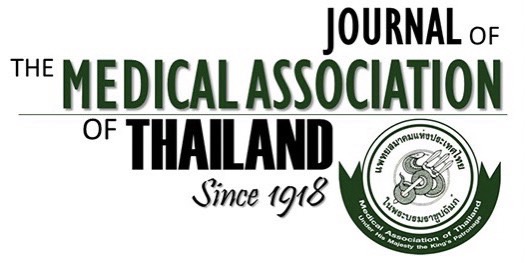Association of Human Leukocyte Antigens (HLA) with Keloids and Hypertrophic Scar in Thais
Chalermpong Chatdokmaiprai¹, Chaipak Sithinatesakul¹, Vorachai Sirikulchayanonta², Umaporn Udomsubpayakul³, Duangtawan Thammanichanond⁴
Affiliation : ¹ Division of Plastic Surgery and Maxillofacial Surgery, Department of Surgery, Faculty of Medicine Ramathibodi Hospital, Mahidol University, Bangkok, Thailand; ² Faculty of Science, Rangsit University, Patumthani, Thailand; ³ Section for Clinical Epidemiology and Biostatistics, Faculty of Medicine Ramathibodi Hospital, Mahidol University, Bangkok, Thailand; ⁴ Histocompatibility and Immunogenetics Laboratory, Department of Pathology, Faculty of Medicine Ramathibodi Hospital, Mahidol University, Bangkok, Thailand
Background: Keloids and hypertrophic scars are abnormal fibro-proliferative lesions. Associations between genes, the human leukocyte antigen (HLA) system in particular, and keloids have been studied in various ethnic groups but not in Thais.
Objective: To investigate the association of HLA alleles with keloids and hypertrophic scars in Thais.
Materials and Methods: The present study employed a retrospective case-control design. Scar assessment was performed on 139 kidney donors who underwent nephrectomy at Ramathibodi Hospital between January 2008 and December 2015. The wound scars after nephrectomy were evaluated and graded by a plastic surgeon using the modified Vancouver Scar Scale. Kidney donors who were unable to communicate well or who had autoimmune diseases or complications from surgery were excluded from the study. The diagnosis of a keloid scar, hypertrophic scar, and flat scar was made by clinical criteria. The donors were categorized into groups with three scar types, flat as the control group, hypertrophic, and keloid. The associations between the frequencies of HLA antigen with hypertrophic scar and keloids were measured with an odds ratio using logistic regression analysis.
Results: Of the 139 living kidney donors, 15 (10.8%) had keloids, 46 (33.1%) had hypertrophic scars, and 78 (56.1%) had flat scars. Sixty-one HLA-A, -B, -DRB1, and -DQB1 alleles were evaluated in the present study. Compared with controls, the allele frequency of HLA-DRB1*15 was significantly higher in the keloid group at 43.33% versus 24.36% (odds ratio 2.37, 95% confidence interval 1.06 to 5.33, p=0.036). No significant association between HLA alleles and hypertrophic scars was found.
Conclusion: The present study demonstrated the positive association of HLA-DRB1*15 with keloids in Thai individuals. The HLA-DRB1*15 could be a susceptibility factor for the development of keloids.
Received 3 July 2023 | Revised 19 January 2024 | Accepted 21 January 2024
DOI: 10.35755/jmedassocthai.2024.2.13944
Keywords : Human leukocyte antigen; Keloids; Thais, HLA-DRB1; Positive association
All Articles
Download



